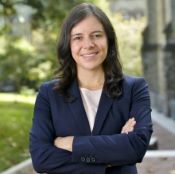Biostatistics Dept Seminar: Introducing Forensic Science to Biostatistics: A Method for Forensic Toolmark Comparisons
Department & Center Events
Biostatistics Department Seminar
Title: Introducing Forensic Science to Biostatistics: A Method for Forensic Toolmark Comparisons
Abstract: This talk introduces topics from forensic science to biostatistics and public health researchers. Attorneys and forensic scientists often make statistical arguments, and it is crucial that statisticians make recommendations about how to avoid the misuse of statistics in the law. The misuse of statistics has obvious social impacts, such as miscarriages of justice and errors of impunity. On a broader social level, such errors can lead to the mistrust in the criminal justice system, especially by populations that are overrepresented in the system. In short, this is a field in which statisticians can have a real, positive impact on society. Misuse of statistics arises in criminal cases, for example, when the determination of guilt depends on subjective forensic methods.
Comparisons of toolmarks (e.g., marks on wires from an explosive device) are currently performed subjectively by humans, which leads to a lack of consistency and accuracy. Furthermore, toolmarks can be generated at many different angles, directions, and other factors, which could make comparisons challenging. We generate original toolmark 3D data, at different angles of attack and directions of mark generation, and train an algorithm to compare toolmark signals objectively. We study the variability within and between tools by means of similarity matrices as heat maps, plotting the known-match and known-non-match densities, and by classifying based on the intersection point between the densities as a threshold. Our method allows for the derivation of a likelihood ratio for a new pair of marks, and it has a cross-validated sensitivity of 98% and specificity of 96%. How much this algorithm generalizes to other types of tools and other factors remains an open question. This empirically trained, open-source method can be used by forensic examiners to compare toolmarks objectively and thus improve the reliability of toolmark comparisons.
I welcome ideas from biostatistics and public health to continue improving this work. For instance, researchers who work with actigraphy and brain waves might provide valuable feedback. With no regulatory oversight to ensure that statistical analyses be performed correctly, forensic science has much to learn from the use of statistics and machine learning in medicine and other fields.
Speaker

Maria Cuellar, PhD, is Assistant Professor of Criminology and Assistant Professor of Statistics and Data Science in the Department of Criminology, University of Pennsylvania. Dr. Cuellar's research examines the use of statistics in the law. Her research focuses on two areas: causal inference and the analysis of forensic evidence.
Zoom Registration
If you would like to join via Zoom, please register here.
2023-2024 Monday Seminar Series
All seminars are held at 12:05 PM via Zoom and onsite in Room W2008. View all seminar information here.
